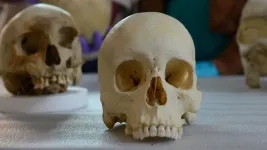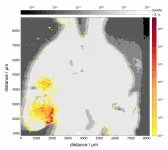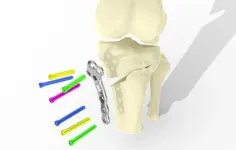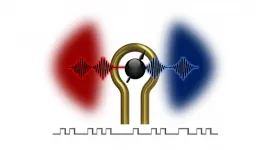(Press-News.org) A new study finds forensics researchers use terms related to ancestry and race in inconsistent ways, and calls for the discipline to adopt a new approach to better account for both the fluidity of populations and how historical events have shaped our skeletal characteristics.
"Forensic anthropology is a science, and we need to use terms consistently," says Ann Ross, corresponding author of the study and a professor of biological sciences at North Carolina State University. "Our study both highlights our discipline's challenges in discussing issues of ancestral origin consistently, and suggests that focusing on population affinity would be a way forward."
Race is a social construct - there's no scientific basis for it. Population affinity, in the context of forensic anthropology, is determined by the skeletal characteristics associated with groups of people. Those characteristics are shaped by historic events and forces such as gene flow, migration, and so on. What's more, these population groups can be very fluid.
In practical terms, that this means that race can be wildly misleading in a forensic context. For example, a missing person may have been listed as Black on their driver's license because of their skin color. But their skeletal remains may not indicate they were of African descent, because their bone structure may reflect other aspects of their ancestry.
"Like many disciplines, forensic anthropology has been coming to terms with issues regarding race," Ross says. "Some people in the discipline want to do away completely with assessing an individual's place of origin. Others say that conventional approaches still have value in helping to identify human remains.
"In this paper, we are recommending a third path. This study is focused on finding ways to evaluate human variation that give us valuable information in forensic and anthropological contexts, but that avoid clinging to the use of outdated defaults such as race."
In one part of the study, the researchers looked at all of the papers published in the Journal of Forensic Sciences between 2009 and 2019 that referenced ancestry, race or related terms. The goal of this content analysis was to determine if the terms were being used consistently within the field. And they were not.
"The Journal of Forensic Sciences is the flagship journal for forensic sciences in the U.S., and even there we found inconsistencies in how our field uses these terms," Ross says. "Inconsistent terminology opens the door to confusion, misunderstanding and misuse within the discipline."
In a second part of the study, the researchers used geometric morphometric data and spatial analysis methods to evaluate the validity of terms such as "European" or "African" to describe the ancestral origin of human remains.
Altogether, the researchers evaluated nine datasets, comprising data on 397 people. The datasets were of human remains collected in Chile, Colombia, Cuba, Guatemala, Panama, Puerto Rico, Peru, Spain and a population of enslaved Africans that had been buried in Cuba. All of the remains, except for those of the enslaved Africans, were from the 20th or 21st centuries.
"Regarding the data we have on the remains of enslaved Africans, we want to acknowledge the value that data collected from such samples can contribute to discussions of human variation, while also noting that the history and ethics of human skeletal collections, in general, is often dubious," Ross says. "Such body harvesting all too often occurred under the umbrella of scientific racism, without the permission of the deceased or next of kin, and disproportionately targeted marginalized populations."
In their review of recent papers, the researchers found that forensics experts often still referred to remains as being of African, Asian or European origin.
"But our analysis of these nine datasets shows that this approach is wrong, because it's not that simple," Ross says.
"Let's use Panama as an example," says Ross, who is from Panama. "There have been huge movements of people into this area from all over the world over the past 500 years: indigenous peoples who predate colonialism, colonizers from Europe, slaves from Africa, immigrants from Asia. The contemporary remains we see in Panama reflect all of those influences."
Ross also noted that the analysis of the nine datasets also highlighted a flaw in the contemporary idea of "clines." The idea of clines is basically that, while there are changes from one group of people to another, populations who are geographically close to each other are more similar than populations that are geographically distant. However, the researchers found that this assumption can be misleading.
For example, Panama and Colombia share a border, but very different historical forces have acted on Panama and Colombia in recent centuries - so the skeletal characteristics of remains from those two countries are much less similar than one would anticipate.
"All of this is important for multiple reasons, such as taking meaningful steps to reduce racism in our field, and ensuring that we are communicating clearly with each other within the discipline," Ross says. "It is also important because marginalized people are most often the people whose remains go unidentified. Labeling them as 'Hispanic' or 'Black' is misleading. We, as forensic anthropologists, need to change the way we think about origin. We need to begin thinking about physical markers in the context of population affinity and how we can use that to both communicate clearly and to help understand who we are seeing when we work with unidentified remains. We need to ensure that we are not contributing - even inadvertently - to structural inequities and racism.
"This also means that we are faced with a wide range of new research questions. As a field, much of our work has focused on looking at data from the remains of historic populations. I think we need to begin doing more work that can help us better understand the ways in which historical events have helped to shape the skeletal characteristics of modern populations."
INFORMATION:
The study, "Ancestry Studies in Forensic Anthropology: Back on the Frontier of Racism," is published open access in the journal Biology. The paper was co-authored by Shanna Williams, a clinical associate professor of biomedical sciences at the University of South Carolina School of Medicine Greenville.
Super-thin carbon molecular sieve (CMS) membranes may not be best for separating industrially important chemical mixtures. However, ensuring the CMS film thickness is just right could enable more energy-efficient purification of chemical products, KAUST researchers have shown.
CMS membranes, as their name suggests, can purify mixtures of liquids or gases by permitting only certain molecules to pass through their subnanometer-sized pores. Currently, the chemical industry mainly uses heat-based processes such as distillation to separate product mixtures, but these processes consume about 10 percent of global energy output. "This situation is highly unsustainable," says Wojciech Ogieglo, a research scientist at KAUST. "We believe that a good ...
The premise of heated tobacco (HT) is simple: tobacco leaf is heated, never burnt, so avoiding many harmful by-products of combustion for the user. The exhaled 'mist' is correctly termed an aerosol, which is almost invisible and far less dense and pungent than the exhaled smoke from combustible cigarettes.
Another advantage of HT is that there are no 'side-stream' emissions to impact air quality (or disturb bystanders - these emissions form part of the ambient smoke that's often known as environmental tobacco smoke (ETS) or 'second-hand' smoke), because unlike a combustible cigarette there is no constantly burning tip. Our previous research suggests that, unlike cigarettes, using our Pulze heated tobacco device causes no negative impact on indoor air quality ...
Researchers have found evidence for an anomalous phase of matter that was predicted to exist in the 1960s. Harnessing its properties could pave the way to new technologies able to share information without energy losses. These results are reported in the journal Science Advances.
While investigating a quantum material, the researchers from the University of Cambridge who led the study observed the presence of unexpectedly fast waves of energy rippling through the material when they exposed it to short and intense laser pulses. They were able to make these observations by using a microscopic speed camera that can track small and very fast movement on a scale that is challenging with many other techniques. This technique probes the material with two light pulses: the first one disturbs it ...
In lab tests, Imperial researchers have created a metal-based molecule that inhibits the build-up of a peptide associated with Alzheimer's disease.
A peptide is a fragment of a protein, and one of the key hallmarks of Alzheimer's disease is the build-up of a specific peptide known as amyloid-β. The team demonstrated that with the aid of ultrasound, their molecule can cross the blood-brain barrier in mice, targeting the part of the brain where the damaging peptide most often accumulates.
Alzheimer's disease is the most common form of dementia, affecting approximately 50 million people worldwide. There is a pressing need to develop drugs ...
Pioneering 'printed metal' procedure to create bespoke treatment for early knee osteoarthritis set to be trialled in the UK following MHRA approval.
World's first 3D printed high tibial osteotomy (HTO) device and procedure developed at University of Bath given approval for UK trials
Bespoke titanium alloy HTO implants that fit perfectly are designed to reduce discomfort for knee osteoarthritis patients
Sophisticated 3D scanning aims to make surgery quicker and safer
New TOKA process could make earlier intervention possible - saving patients decades of pain before surgery becomes viable
Intro
A ...
Many of us swing through gates every day -- points of entry and exit to a space like a garden, park or subway. Electronics have gates too. These control the flow of information from one place to another by means of an electrical signal. Unlike a garden gate, these gates require control of their opening and closing many times faster than the blink of an eye.
Scientists at the U.S. Department of Energy's (DOE) Argonne National Laboratory and the University of Chicago's Pritzker School of Molecular Engineering have devised a unique means of achieving effective gate operation with a form of information processing called electromagnonics. Their pivotal discovery allows real-time control of information transfer between microwave photons and magnons. And it could result in a new generation ...
An important new study by researchers at the U.S. Department of Energy's (DOE) Argonne National Laboratory has yielded critical fresh insights into the lithium production process and how it relates to long-term environmental sustainability, particularly in the area of transportation with batteries and electric vehicles.
The paper, "Energy, Greenhouse Gas, and Water Life Cycle Analysis of Lithium Carbonate and Lithium Hydroxide Monohydrate from Brine and Ore Resources and Their Use in Lithium Ion Battery Cathodes and Lithium Ion Batteries," in the journal ...
Prof. PAN Jianwei and Prof. ZHANG Jun from University of Science of Technology of China (USTC) of the Chinese Academy of Sciences, collaborating with Prof. CHU Tao's group from Zhejiang University, realized the fastest and miniaturized real-time quantum random number generator (QRNG) with the record-breaking output rate of 18.8 Gbps by combing a state-of-the-art photonic integrated chip with the optimized real-time post processing. The study was published in Applied Physics Letters on June 29.
Random number exists in many fields such as information security and cryptology industries. Different from other random number generators, QRNG, as the key part in quantum communication system, embraces the characteristics ...
Prof. DU Jiangfeng, Prof. RONG Xing, and their colleagues from the Key Laboratory of Micromagnetic Resonance, University of Science and Technology of China (USTC) of the Chinese Academy of Sciences (CAS), set the most stringent laboratory constraint on the exotic spin- and velocity-dependent interaction at the micrometer scale. This study was published in Physical Review Letters.
The search for dark matter, dark energy, and extra forces is important for the understanding of the existence of the matter that accounts for about a quarter of the universe, but little progress has been made. It is necessary to theoretically and experimentally find particles outside the Standard Model, a tradition ...
Shells of tamarind, a tropical fruit consumed worldwide, are discarded during food production. As they are bulky, tamarind shells take up a considerable amount of space in landfills where they are disposed as agricultural waste.
However, a team of international scientists led by Nanyang Technological University, Singapore (NTU Singapore) has found a way to deal with the problem. By processing the tamarind shells which are rich in carbon, the scientists converted the waste material into carbon nanosheets, which are a key component of supercapacitors - energy storage devices that are used in automobiles, buses, electric vehicles, trains, and elevators.
The study reflects ...






